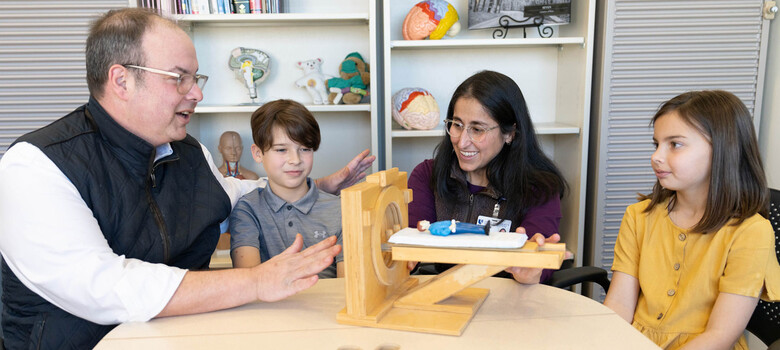 From the DukeHealth.org archives. Content may be out of date.
From the DukeHealth.org archives. Content may be out of date.
The Unspoken Dilemma

Incontinence. Bowel control problems. Pelvic pain, especially during intercourse. Many women live with these problems silently, not knowing that treatments are available that provide relief. Learn about your treatment options.
Common Misconceptions
“One in three women have a pelvic floor disorder that leads to problems with bladder control, pelvic organ prolapse [falling from their normal positions], or bowel dysfunction,” says Duke urogynecologist Anthony Visco, MD. “And many women we see have been living with their condition for many years, either because they were uncomfortable bringing it up with their physician or because they thought there were no real treatment options.”
Men can have pelvic issues, too, but, like women, assume that there isn’t anything that will help.
Nothing could be further from the truth, says Natalie Sebba of Duke Pelvic Health Physical Therapy, a group of physical therapists who are dedicated exclusively to these types of disorders and who have helped countless men and women reduce and even cure incontinence, pelvic pain, and other conditions. “Women will say, ‘Leaking urine is normal.’ It may be common,” Sebba says, “but it’s definitely not normal.” And often the problems can be radically improved—even altogether resolved—by simple, often noninvasive techniques.
Exercises Enhanced with Biofeedback
Incontinence (leaking urine)—whether it’s stress incontinence (leaking brought on by coughing, sneezing, laughing, running) or urge incontinence (a strong urge to urinate), or a combination of both—is the result of weak muscle tone and poor coordination with the bladder. It’s usually due to childbirth in women, to prostate surgery in men, or to aging.
Like any muscle, the pelvic floor can be strengthened, but how to go about that isn’t always intuitive. In fact, it can be hard to know when we are actually using it, Sebba says.
In the Duke Pelvic Health Physical Therapy clinics, specialists will often use something called EMG biofeedback—a machine that allows patients to get a visual signal when they’re activating their pelvic floor muscle. “From there, we teach them exercises to strengthen and coordinate the muscles, and that can make all the difference. It’s really effective,” she says.
Some incontinence patients may require medication at first, but when it’s combined with physical therapy, often the patients are able to wean off the drugs. “We’re encouraging muscles to function normally, and it’s amazing how many things will resolve when you learn to utilize your body the way it’s supposed to be used,” Sebba says.
Individualized Therapies
At Duke Urogynecology, specialists also use simple, nonsurgical treatments whenever possible. “One of the treatments we sometimes use for overactive bladder or urge incontinence is PTNS, or posterior tibial nerve stimulation,” Dr. Visco says. “We can do it in the office, and it’s a lot like acupuncture. The stimulation is applied behind the ankle, to a nerve that travels along the leg to the back. It’s usually done in a 12-week series. It’s not uncomfortable, and we’ve seen remarkable improvements in symptoms.”
There are some times when a more invasive treatment is needed, but Dr. Visco says that surgical options are getting better every day. “Many of our surgeries are truly outpatient, at most an overnight stay, with complete recovery in a few days to a few weeks,” he says.
Dr. Visco advises women always to seek out a surgeon who specializes in these procedures, noting that the physicians and nurses at Duke Urogynecology, like the physical therapists at Duke Pelvic Health Physical Therapy, are devoted solely to caring for patients who have these issues. “Our nurses are one of our greatest assets,” he says. “They really talk to the women who come to see us, making them feel comfortable, follow up with them throughout the treatment process.
“We believe in individualizing therapy based on patients’ needs and goals,” Dr. Visco adds. “This isn’t a one-size-fits-all process.” But for almost all patients, successful treatment can mean a whole new lifestyle. “Our patients are suddenly able to do the things they shied away from in the past,” he says. “A lot of patients say, ‘You’ve completely changed my life.’ We really want people to know that they don’t have to live with it.”



